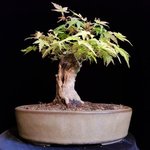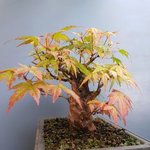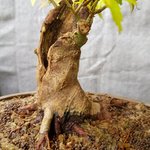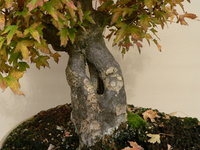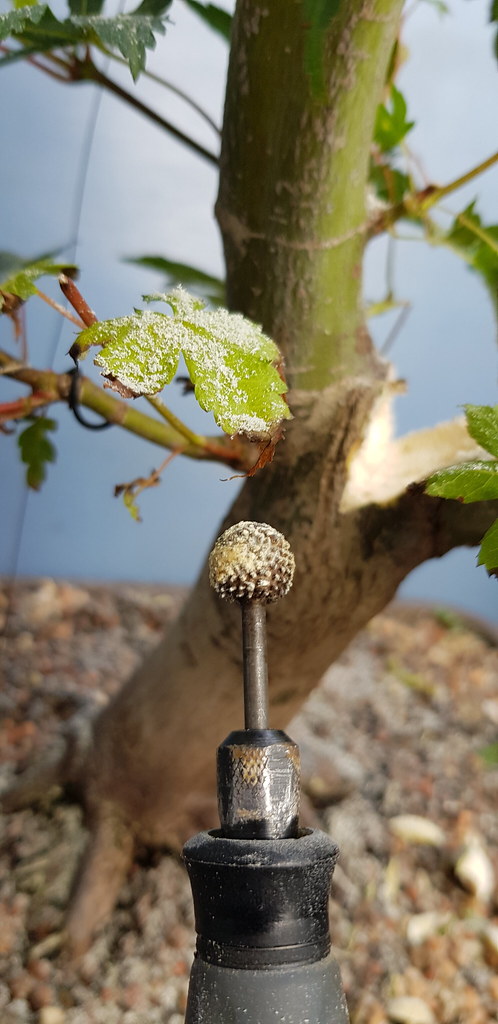luvinthemountains
Chumono
Starting a thread for this trident maple I am developing from field-grown stock. Last year, I removed three large subtrunks and potted it in this shallow 18" patio pot for growing out. It grew very well in potting soil (a bit of an experiment) and reached a height of about eight feet.
Last month, I performed a flat cut on the trunk near a well-placed branch, which will form the next trunk section. The lower, heavier branch I will likely cut back very hard after the spring growth hardens off.

I know that the large scar in the front will take years to close over. There are two more on the back! C'est la vie. I may put it back in the ground for a while this fall, after we move, and that should speed the process. And yes, I can see that fungus starting to set in. I expect to be hitting that with an application of sulfur this weekend.
Last month, I performed a flat cut on the trunk near a well-placed branch, which will form the next trunk section. The lower, heavier branch I will likely cut back very hard after the spring growth hardens off.

I know that the large scar in the front will take years to close over. There are two more on the back! C'est la vie. I may put it back in the ground for a while this fall, after we move, and that should speed the process. And yes, I can see that fungus starting to set in. I expect to be hitting that with an application of sulfur this weekend.

